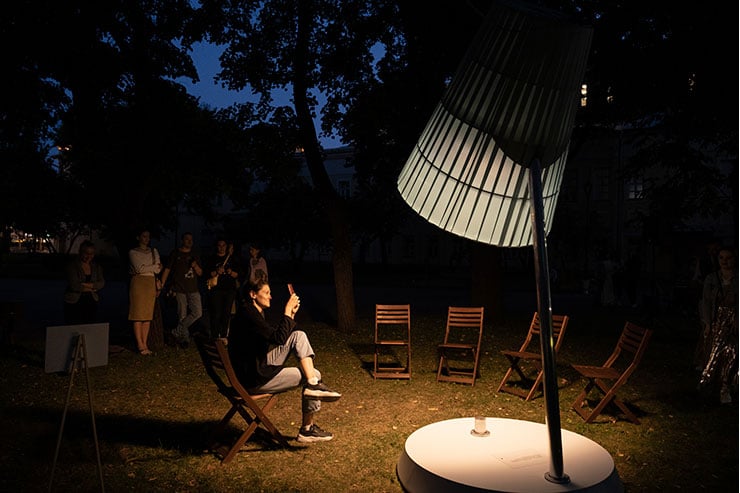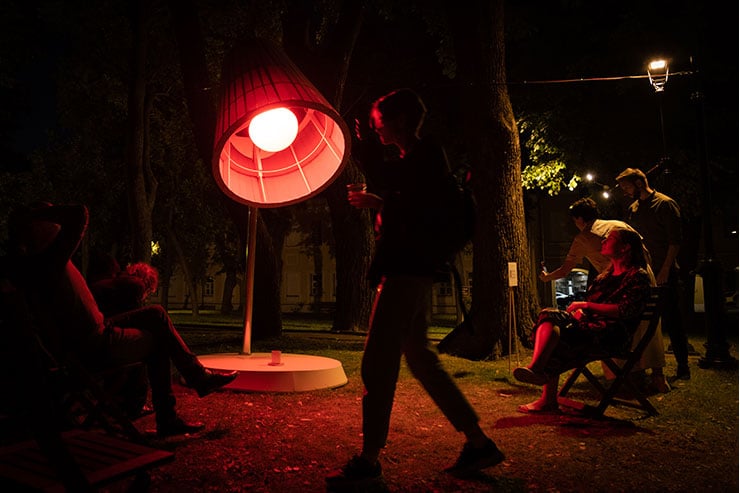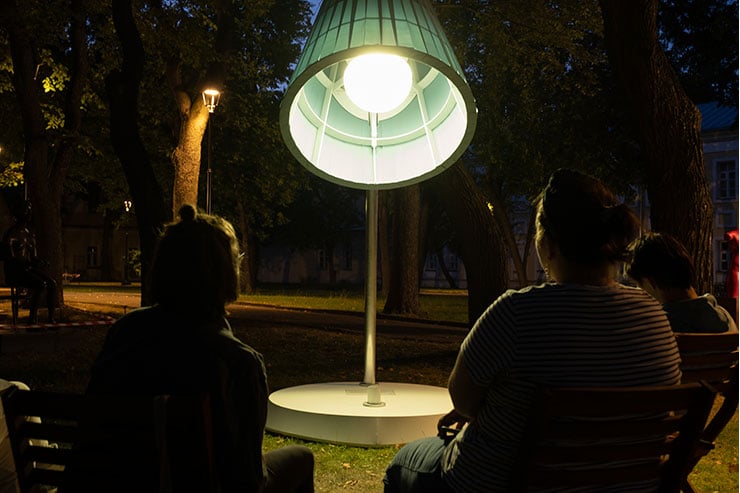This website uses cookies so that we can provide you with the best user experience possible. Cookie information is stored in your browser and performs functions such as recognising you when you return to our website and helping our team to understand which sections of the website you find most interesting and useful.
Magic Lamp Experiment, Moscow
EventMagic Lamp ExperimentLocationMoscow, RussiaOrganiserCulture of LightingMain PartnersAll Russian Decorative Museum
Coloured lighting in a city is always an ambiguous matter. In Moscow it is used as a performance tool with its energy overbeating everything. People don’t see an environment anymore, they see colour. Constantly shifting shades of red, green and blue in conjunction with its’ unrestrained quantity – that’s what forms our presentation of coloured lighting in Moscow. Culture of Lighting sees a potential in coloured lighting and understands that colour could transform evening city environments.
In July 2021 Culture of Lighting together with All Russian Decorative Museum organized a series of experiments studying coloured lighting. Everyday outside of museum we demonstrated guests different lighting scenarios and offered to answer some questions concerning changing the mood of the place in relation to the shade of light. Our goal was to research the feedback on different shades, duration and appropriateness of coloured lighting.
Each day during a week people observed different colours: red, orange, yellow, green, blue, purple and different shades of white light. The audience stayed in an environment with changing shades for 17 minutes and then filled out a survey.
Source of light consists of 216 LED lights on 18 modules. All of the LEDs are separated on 18 channels with 12 ones with same colour and plugged in on continuously. That way those channels organised 18 primary colours which allows to receive the rest of the colour gamut.
LEDs were powered from the direct current supply 36V through decoder-stabilizers SR-2114P, providing 255 levels of dimming variations and controlled with DMX protocol. The module provided with energy-independent clock and calendar, alongside a two-line LCD-display allows to automatically launch one of 8 programs depending on weekday and time of day. The Lightsource itself was integrated into the stylized 1960’s table lamp – classic sample of soviet modernism design.
Before experiment begun, we organised a list of hypotheses. These are some of them:
1. Could people use same epithets to describe the same lighting colour? The audience was asked to answer yes or no.
2. Is there a dependency between the motives of the audience member’s participation and the chosen epithets that describe the mood? We split answers into 2 groups: people that came with professional interest and non-professionals who came with their family or friends.
3. Is there a light colour that people would like to enjoy more than others?
It should be noted that we didn’t have the goal to do the full-on scientific research. It was a local event which held our colleagues lighting designers, architects and urbanists. It gave us a chance to talk personally on professional matters after a long lockdown. We certainly got interesting feedback from the museum visitors. We think that results of the survey could help with determining the ways of research for specialists of possibilities and restrictions that coloured lighting has in a city environment. Results of experiment can be found in an online magazine dlinavolny.ru and on Culture of Lighting website.





